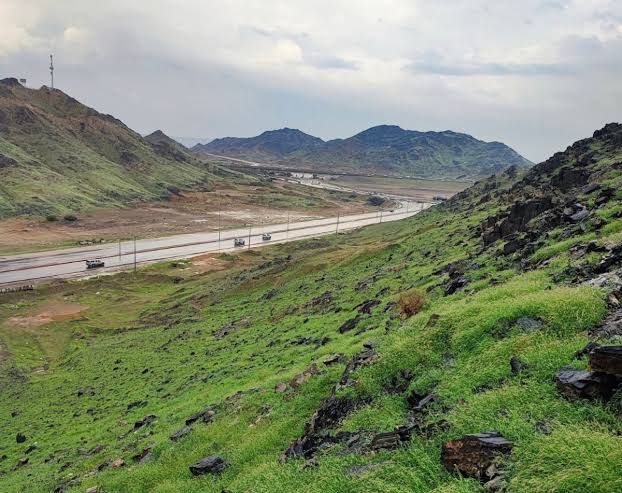Nestled at the heart of Makkah, the verdant tapestry of grass at the base of Mount Hira unfolds as a captivating spectacle, a living canvas painted by the recent rainfall that bestowed its benevolence upon the region. This picturesque scene, a manifestation of nature’s grace, breathes life into the foothills of Hira Mountain, also known as Noor Mountain, creating a visual symphony of lush greenery.
The images captured in the aftermath of the rain spell depict a transformative landscape, where the arid earth metamorphoses into a carpet of emerald hues, adorning the rugged slopes with a vibrant allure. This striking transformation serves as a testament to the resilience and beauty that lies dormant in the arid landscapes, waiting to be awakened by the touch of rain.
Mount Hira, standing tall at 642 meters, assumes a role of paramount historical significance in Makkah, a sacred site that beckons pilgrims and visitors alike throughout the year. Its steep descent from 380 meters gives way to a gentle slope, forming a right-angled ascent towards its summit. The mountain, spanning an expansive five square kilometers, unveils a peak that mirrors the distinct hump of a camel, a geological marvel that adds to its allure.
Beyond the visual grandeur, Mount Hira carries profound religious importance, woven into the fabric of Islamic history. It is here that the Prophet Muhammad, peace be upon him, received the initial revelations of the Quran in the Cave of Hira, a spiritual milestone that reverberates through the annals of time.
As visitors tread upon the lush carpet of greenery at the mountain’s base, they are not merely witnessing a scenic transformation but connecting with a landscape imbued with historical, spiritual, and natural significance. Mount Hira, veiled in the aftermath of rain, stands as a living testament to the harmonious convergence of nature’s beauty and the sacred narratives etched into the contours of Makkah’s terrain.


